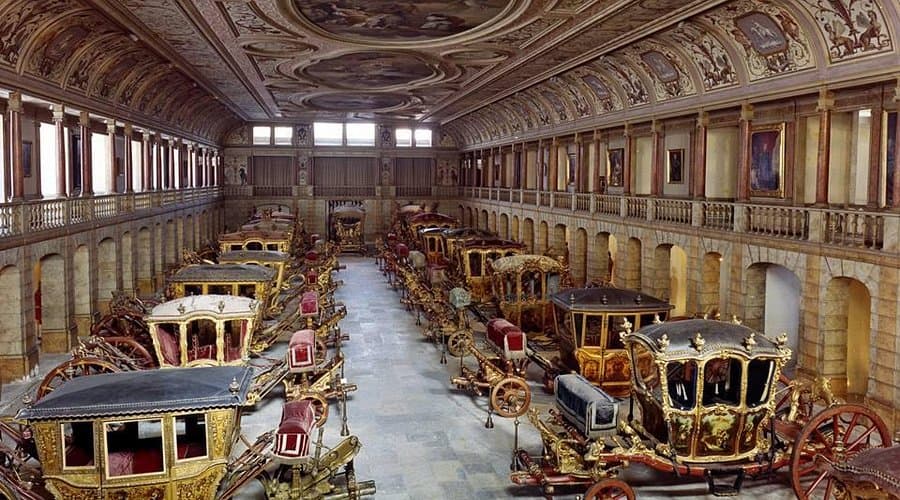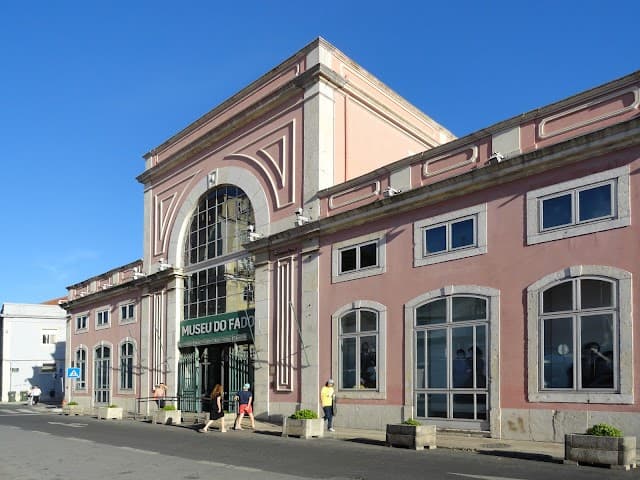.webp&w=3840&q=100)
A true cultural treasure lies hidden in the peaceful neighbourhood of Xabregas in Lisbon: the National Azulejo Museum (Museu Nacional do Azulejo). Often overlooked by tourists, this museum, housed in the magnificent Madre de Deus Convent founded in 1509 by Queen D. Leonor, is well worth a visit. The azulejo, Portugal’s iconic glazed tile, is far more than a decorative element, it tells the story, the art, and the very soul of the country. Through the museum’s collections, visitors can trace the evolution of this fascinating art form, from its Moorish origins to its most contemporary interpretations.
A place steeped in history
The Madre de Deus Convent is a true architectural gem, an outstanding example of Manueline and Baroque styles. Its imposing façade, elegant cloisters and richly decorated church, adorned with gilding and frescoes, make it an essential stop for lovers of history and art. Today, the museum occupies the entire building, offering visitors a complete immersion into the world of azulejos and the tranquil atmosphere of Lisbon’s old monasteries.
An exceptional collection
The museum houses one of the largest and most remarkable collections of azulejos in the world, covering a period from the 15th century to the present day. Among its most impressive pieces is the Great Panorama of Lisbon, a 23-metre-long panel created in 1738 that depicts the city before the earthquake of 1755. Visitors can also admire the famous Hunting the Leopard panels from the 17th century, which reveal Oriental influences on Portuguese art, as well as the splendid Nativity Scene, an 18th-century Baroque masterpiece of decorative richness. The museum also preserves azulejos from former convents, churches, and palaces, bearing witness to the deep-rooted importance of this art in Portugal’s architectural heritage.
.jpg?2025-10-28T22%3A54%3A09.601Z)
© bonjourlisbonne
Practical information
Address : Rua da Madre de Deus, 4, 1900-312 Lisbon.
Opening hours : Tuesday to Sunday, from 10:00 a.m. to 6:00 p.m. (last entry at 5:15 p.m.). Closed on Mondays, 1 January, Easter Sunday, 1 May, 13 June and 25 December.
Admission : around €10 for adults. Free for children and young people up to 12 years old, residents of Portugal in some cases, people with disabilities (with a companion) and war veterans.
Access : buses no. 718, 742, 759, 794 (stop “Madre de Deus”) ; train and metro at Santa Apolónia station (about a 20-minute walk).
Facilities : café and shop, library by appointment (Monday to Friday, from 2:00 p.m. to 5:30 p.m.), as well as guided tours and educational workshops for groups and schools.
Why visit the museum
The National Azulejo Museum is an essential stop to truly understand Portugal’s cultural identity. It offers a unique insight into the evolution of tile art, from its Moorish roots to modern-day creativity. As you stroll through its galleries, you’ll discover how azulejos have adorned churches, palaces and public spaces, becoming a genuine visual language in their own right. The museum also highlights the ongoing efforts to preserve this heritage and to pass on traditional craftsmanship. Temporary exhibitions, conferences and workshops are regularly organised, allowing visitors to deepen their experience. It’s worth checking the official website before your visit to see what’s on.
Not to be missed
The Church of Madre de Deus, a magnificent Baroque masterpiece richly decorated with gilding and frescoes.
The cloister, adorned with azulejo panels depicting religious scenes.
The temporary exhibitions, which showcase contemporary trends in tile art through the work of both Portuguese and international artists.
The museum café, a calm and inviting spot where you can enjoy a bica (espresso) and a pastel de nata while relaxing in the inner garden.
An unforgettable experience
The National Azulejo Museum is far more than an exhibition space. It is an immersion into the Portuguese spirit ; a meeting point between history, colour and emotion. Each tile tells a fragment of the past, each room reveals a little more of the country’s creative genius. Whether you are passionate about art, history or simply curious, this museum is a must-visit. Wander through its galleries, marvel at the beauty of the azulejos and discover an essential part of Portugal’s heritage, both authentic and timeless.
Share this article
Suggested articles

The Unusual Museums of Portugal
When we think of museums, we often imagine long silent halls, paintings we look at without daring to speak, and guards following us out of the corner of their eye. But in Portugal, museums have an entirely different flavour. Here, they sometimes smell of the sea, of polished wood, of aged leather… and even of grilled sardines ! From north to south, the country is full of quirky, playful, sometimes slightly eccentric museums that tell its story in their own way. Forget the clichés : make room for curiosity, creativity, a touch of fantasy, and above all, some really fun outing ideas !
.jpg&w=3840&q=75)
Maritime Museum in Belém, The Soul of Portuguese Navigators
On the banks of the Tagus River, near the historic Belém Tower in Lisbon, lies a place that transports visitors to the heart of Portugal’s great maritime adventures : the Maritime Museum (“Museu da Marinha” in Portuguese).
.jpeg&w=3840&q=75)
Serralves in Porto, Contemporary Art in a Green Haven
Just a few minutes from Porto’s busiest avenues lies a true sanctuary of contemporary art and nature: the Serralves Foundation. Less visited than other urban landmarks in the city, this unique complex combines modern architecture, a romantic garden, and (very) daring exhibitions. If you are looking for a cultural experience in a green setting, this place is well worth your attention !
.jpg&w=3840&q=75)
The Calouste Gulbenkian Museum : Lisbon’s Hidden Masterpiece
In the heart of a quiet Lisbon district, away from the hustle and bustle of the city centre, lies a treasure often overlooked : the Calouste Gulbenkian Museum! A true gem for art lovers (and not only them), this place is often described as a “hidden masterpiece”, as its richness far exceeds its sober appearance and discreet location…

Fado Museum in Lisbon, Living Memory of a Music
In the heart of Lisbon’s historic Alfama district, the Fado Museum is a must-visit for anyone wanting to understand the musical soul of Portugal ! Opened on 25 September 1998, this museum is entirely dedicated to fado, the melancholic and passionate Portuguese music genre.


